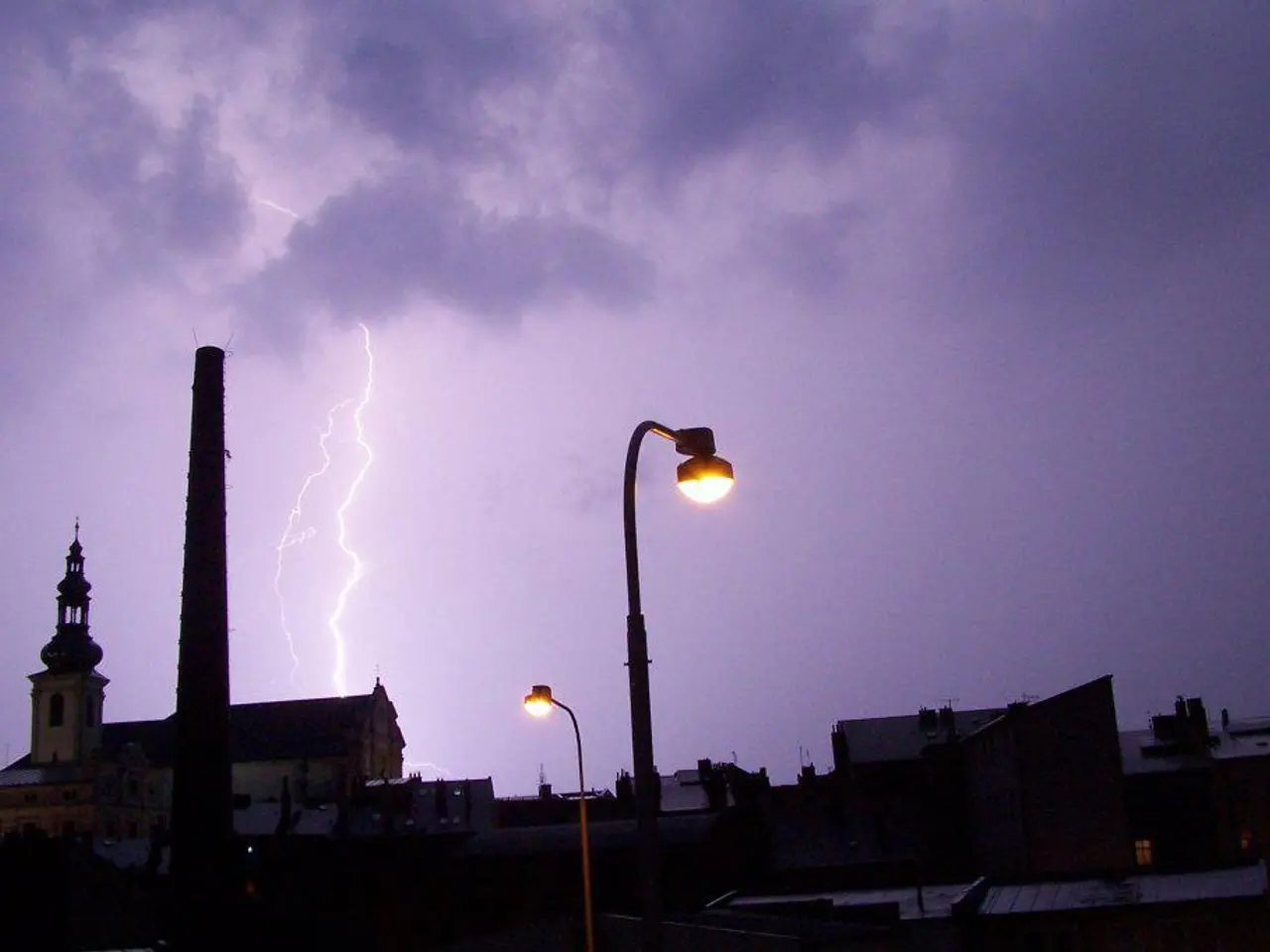Volcano Eruption Triggers Dam Destruction in Kamchatka Region
Klyuchevskoy Volcano Erupts, Affecting Kamchatka Peninsula
Klyuchevskoy Volcano in the Kamchatka Peninsula, Russia, has been exhibiting significant eruptive activity since July 30, 2025, following a major earthquake in the region. The volcano has produced a persistent 40,000-foot-high eruption column with continuous ash plume emissions, drifting hundreds of miles to the east[2].
The eruption style has shifted from strombolian to vulcanian, characterized by a sustained ash plume[2]. Lava flows have covered an area of approximately 0.76 square kilometers[2]. The Aviation Color Code remains at Orange, indicating moderate to high volcanic activity[1].
While the specific impact on the Milkovskoye-Ust-Kamchatsk highway and the Tolbachinsky Dol region is not yet clear, ash plumes and potential ashfall could pose risks to road conditions and visibility. However, there is no indication that the ash plume's path currently intersects with these areas[4].
The main concern is ashfall, which can affect air quality, vegetation, and water sources. Lava flows are a significant concern for areas immediately around the volcano, but they are not reported to have affected distant regions like Tolbachinsky Dol.
The increased volcanic activity in the Kamchatka Peninsula might influence local conditions across various regions[4]. The Tolbachinsky Dol, being a volcanically active region itself, might experience indirect effects from the increased activity at Klyuchevskoy.
It is crucial to monitor updates from local authorities regarding any potential impacts on specific regions or infrastructure. Currently, there is no immediate threat to populated areas from the eruption of Klyuchevskoy Volcano. The village of Klyuchi, which has a population of 4500 people, is 30 km from the volcano.
Around 80 secondary craters are located on the slopes of Klyuchevskoy Volcano. A lava flow is descending towards the Boguchansky glacier. Melting ice from the glacier is releasing vast amounts of water, generating large mudflows.
However, it's important to note that the eruption of Klyuchevskoy Volcano is not directly causing the melting ice from the Boguchansky glacier, the resulting rushing waters, or the generation of large mudflows. These events may be indirectly related due to the overall geological disturbance in the region.
The dam on the river was constructed in 2023 but has been destroyed in an unspecified timeframe. The eruption of Klyuchevskoy Volcano is not responsible for the increased activity at Klyuchevskoy following the major earthquake on July 30, 2025, or the destruction of the dam.
If significant mudflows occur, they will reach the Milkovskoye-Ust-Kamchatsk highway, potentially posing risks to road conditions and visibility. Tourists in the Tolbachinsky Dol should be aware of the potential threat of being trapped due to the eruption and resulting mudflows.
The Klyuchevskoy Volcano is the highest active volcano in Eurasia, with a crater 700 meters in diameter. A powerful eruption occurred on July 31, 2025.
Residents and tourists are advised to stay informed and follow instructions from local authorities regarding evacuation protocols and safety measures.
In light of the ongoing eruption at Klyuchevskoy Volcano, it might be worthwhile to keep an eye on the latest news in environmental-science, particularly focusing on the impact of ashfall on air quality and water sources in the Kamchatka Peninsula.The shift in eruptive style at Klyuchevskoy Volcano has prompted discussions in the scientific community about its potential influence on space-and-astronomy, especially considering the removal of a significant amount of debris into the atmosphere, which could affect weather patterns in the region.








